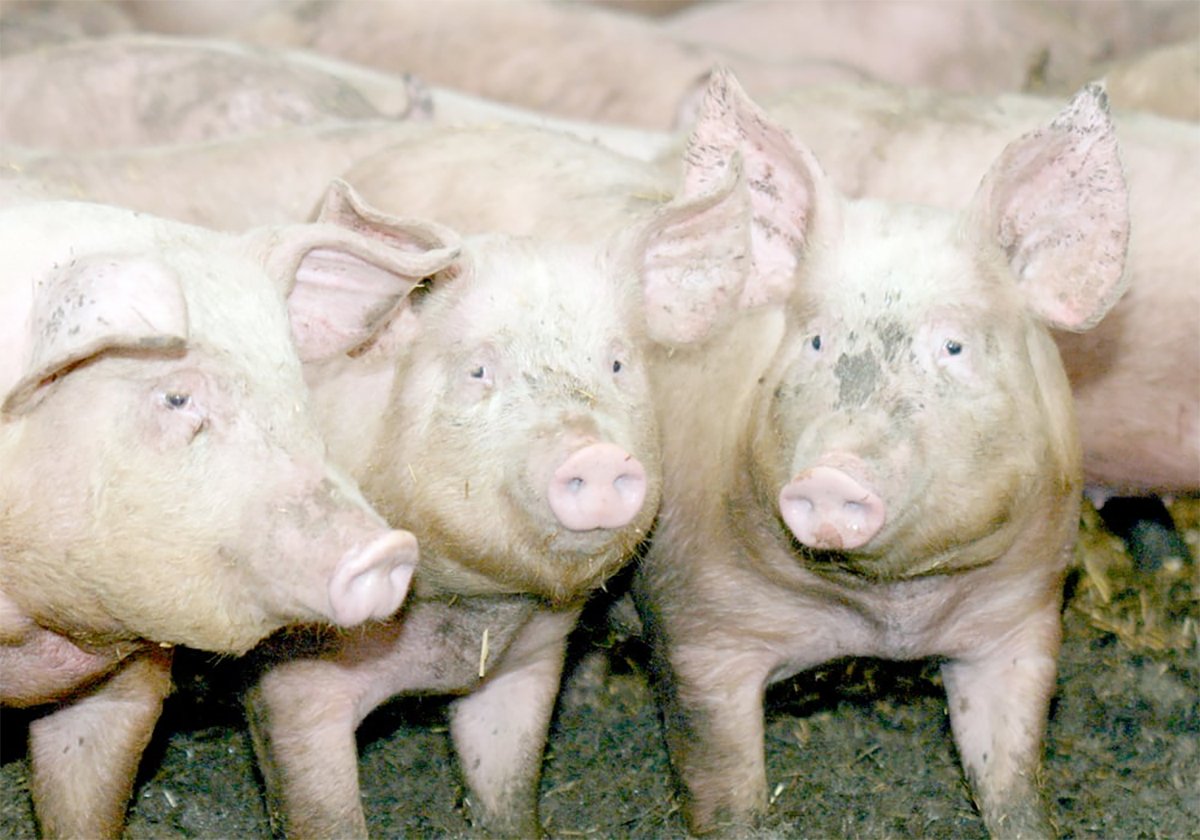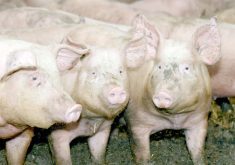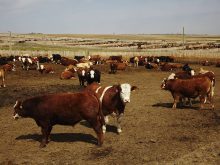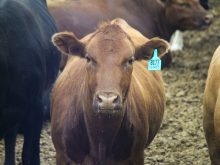IRRICANA, Alta. – Grazing cattle are a common sight along Alberta highways, but when travellers see David and Clair Andrews’ place, many stop and take pictures. Sometimes passersby drive right into the yard near Irricana to ask about the floppy-eared, hump-backed cattle in the pasture.
As one of a handful of purebred Brahman breeders in this country, David Andrews said he’s Canada’s Brahman ambassador.
David chose Brahmans because they were a novelty.
“I thought if I was going to have animals, they might as well be strange ones.”
Read Also

The Western Producer Livestock Report – November 13, 2025
Western Producer Livestock Report for November 13, 2025. See U.S. & Canadian hog prices, Canadian bison & lamb market data and sales insights.
And Andrews’ strange ones are even stranger than most. He specializes in polled animals and it’s estimated there are only 500 polled Brahmans in the world.
When the Andrews were looking for a new type of cattle, a neighbor had a Brahman cow they found friendly. They decided the breed’s reputation for being mean-tempered bucking bulls on the rodeo circuit was wrong.
“When you say rodeo stock you lose value. Nobody wants to have them around because they think they’re vicious. I sell them as gentle pets,” said David.
On this farm the Brahmans behave like friendly dogs, following Claire and David around the yard looking for a scratch on the jaw. When the calves are young the mothers can be protective, but otherwise they’re docile and curious.
Their first breeding stock came from Dick Nolte of Jonesboro, Texas in 1990.
While these cattle may seem more at home in Texas, David said they do well in Alberta’s weather conditions and pay their way as a niche market item.
Financially rewarding
The Andrews have about 30 head of registered Brahman cattle. Each animal has returned about $5,000 in semen, embryo and live sales.
“This is the most profitable hobby anybody ever had,” David said.
Off the farm the Andrews own a construction business in Irricana that handles projects for the oil industry.
Semen and embryos have been shipped to Australia, New Zealand, Brazil and throughout Canada. International interest is strong because as Canadian animals, they carry a clean bill of health and aren’t troubled by problems like bluetongue or other diseases like animals from the southern United States.
“I don’t think I’ve hardly used a vaccination needle since I’ve had them other than giving them blackleg shots,” said David.
Gestation is about 10 days longer than British or European breeds and they drop smaller calves. The Andrews used to raise registered Limousin and find they cross well with the Brahmans.
Crossbreeds calve easily and lose the characteristic hump on the shoulders. Rather than floppy ears, their ears are large and stick straight out, parallel to the ground.
Fine-boned animal
In the Andrews’ breeding program, they select for beefiness with good muscling in the hind end. Some of the traditional Brahmans are fine-boned, which the Andrews are trying to upgrade because they want a sturdier animal.
A Quebec farmer who bought cattle from them breeds Brahman bulls to Holsteins because they put added muscle on bull calves. The Holstein crosses are pure black with large ears.
The Brahman breed was derived from four Indian cattle breeds whose relatives include Zebus, Red Sindhi, Nellore and Girs.
In the southern United States, Brahman was used as a base for such American-developed breeds as the Beefmaster, Braford, Brahmousin, Brangus, Charbray and Santa Gertrudis.
They tend to be red or grey. Cows reach about 1,000 to 1,200 pounds and bulls average between 2,000 and 2,400 pounds, although some can reach 2,800 pounds.















